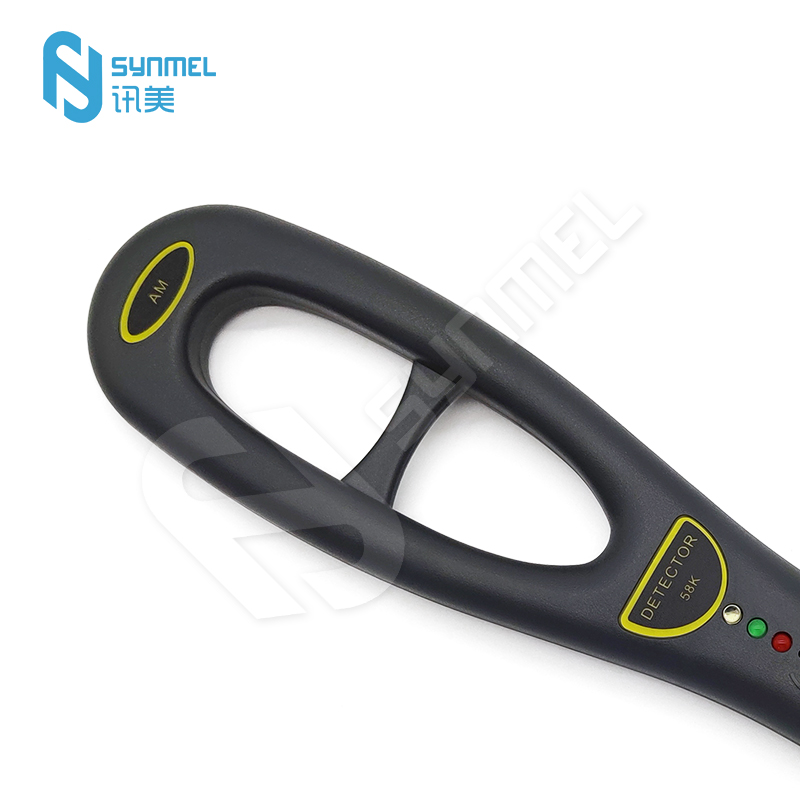- English
- Español
- Português
- русский
- Français
- 日本語
- Deutsch
- tiếng Việt
- Italiano
- Nederlands
- ภาษาไทย
- Polski
- 한국어
- Svenska
- magyar
- Malay
- বাংলা ভাষার
- Dansk
- Suomi
- हिन्दी
- Pilipino
- Türkçe
- Gaeilge
- العربية
- Indonesia
- Norsk
- تمل
- český
- ελληνικά
- український
- Javanese
- فارسی
- தமிழ்
- తెలుగు
- नेपाली
- Burmese
- български
- ລາວ
- Latine
- Қазақша
- Euskal
- Azərbaycan
- Slovenský jazyk
- Македонски
- Lietuvos
- Eesti Keel
- Română
- Slovenski
- मराठी
- Srpski језик
Applications of Hand-held Verifiers
2025-11-21
A handheld verifier is a portable and easy-to-use device primarily used to verify and test various types of items or systems. In different application areas, it can be used to quickly confirm the performance, quality, and compliance of products or equipment. Here are some common applications of handheld verifiers:
1. Electronic Product Testing and Maintenance
Battery Testing: Handheld verifiers are commonly used to test the voltage, current, and health status of batteries to ensure that battery performance meets standards. They are widely used in devices such as mobile phones, laptops, and car batteries.
Circuit Board Testing: Electronic equipment manufacturers and repair personnel use handheld verifiers to test the functionality of circuit boards and detect short circuits or other faults.
2. Industrial Equipment Testing
Temperature and Humidity Measurement: Handheld temperature and humidity verifiers can be used for environmental monitoring in industrial production lines to ensure that machines operate under ideal environmental conditions, avoiding equipment damage or reduced production efficiency due to improper temperature and humidity.
Pressure and Flow Monitoring: In systems with liquid or gas flow, handheld verifiers can be used to detect the pressure and flow rate of pipes, valves, and pumps to ensure stable system operation.
Electrical Safety Testing: Including tests of grounding resistance, voltage, and current, handheld verifiers help electrical engineers ensure the safety of electrical installations.
3. Automotive Industry
Automotive Diagnostics: Handheld automotive verifiers can be used to read vehicle fault codes, check engine performance, transmission systems, and emission systems, helping automotive technicians diagnose and repair problems.
Electric Vehicle Charging System Testing: Used to test the operating status of electric vehicle chargers and batteries, ensuring the reliability of the charging system.
4. Food and Pharmaceutical Industry
Temperature Control Monitoring: During food processing, storage, and transportation, handheld verifiers can be used to detect the storage temperature of products to ensure compliance with safety and quality standards.
Microbiological Testing: Handheld verifiers can also be used to perform microbiological testing on the environment or product surfaces, ensuring that products are not contaminated and meet hygiene requirements.
5. Construction and Building Industry
Material Testing: For tests such as concrete strength and steel reinforcement thickness, handheld verifiers can be used for rapid on-site testing, avoiding construction quality problems caused by substandard materials.
Building Structure Inspection: Used to inspect the structural stability and health of buildings, such as real-time monitoring of cracks, settlement, or other problems.
6. Power and Energy Industry
Power Facility Maintenance: Handheld verifiers can be used to inspect the power transmission and load conditions of power generation equipment, substations, and other facilities, helping technicians quickly identify fault points on-site.
Solar and Wind Power Equipment Monitoring: Can be used to inspect the performance of solar panels and wind turbines, ensuring the efficient operation of energy equipment.
7. Safety and Security Field
Gas Leak Detection: Handheld gas verifiers can be used to detect leaks of harmful gases, commonly used in the oil and gas industries, as well as for monitoring underground pipelines.
Radiation Monitoring: Used to detect the radiation levels of radioactive materials, ensuring environmental or personnel safety.
8. Wireless Communication Field
Signal Testing: Handheld verifiers can be used to test the signal strength, frequency, and coverage of wireless communication equipment, commonly used by network operators or communication equipment manufacturers for on-site debugging.
Spectrum Analysis: Used to detect and analyze the spectrum of wireless signals, helping to identify signal interference sources and optimize wireless networks.
9. Environmental Protection and Ecological Monitoring
Air Quality Monitoring: Handheld air quality verifiers can be used to monitor harmful substances in the air (such as PM2.5, CO2, NOx, etc.), and are widely used in urban air monitoring and industrial waste gas emission monitoring.
Water Quality Analysis: Handheld water quality testing instruments are used to detect harmful substances in water, such as heavy metals, pH value, dissolved oxygen, etc., and are commonly used in drinking water and wastewater treatment.
10. Laboratory and Scientific Research Fields
Data Acquisition and Analysis: Researchers often use handheld verifiers to collect field data for laboratory analysis and research, such as chemical composition analysis of soil, air, and water samples.
Laboratory Equipment Calibration: Handheld calibration tools are commonly used to ensure the accuracy of laboratory equipment, especially for experimental equipment that requires regular calibration.
11. Consumer Applications
Household Equipment Inspection: Consumers can use handheld verifiers for basic equipment maintenance and fault diagnosis, such as testing the voltage, current, and function of household appliances.
Home Safety Monitoring: For example, handheld smoke detectors, CO detectors, and household power monitoring help consumers improve home safety.
The advantages of handheld validators are their ease of use in the field, simple operation, and accurate data, making them widely used in various industries. They not only improve work efficiency but also reduce human error, ensuring high-quality control during production and maintenance.




